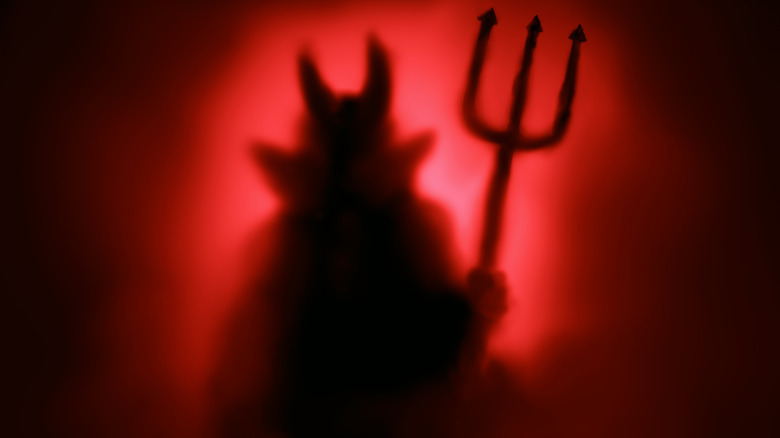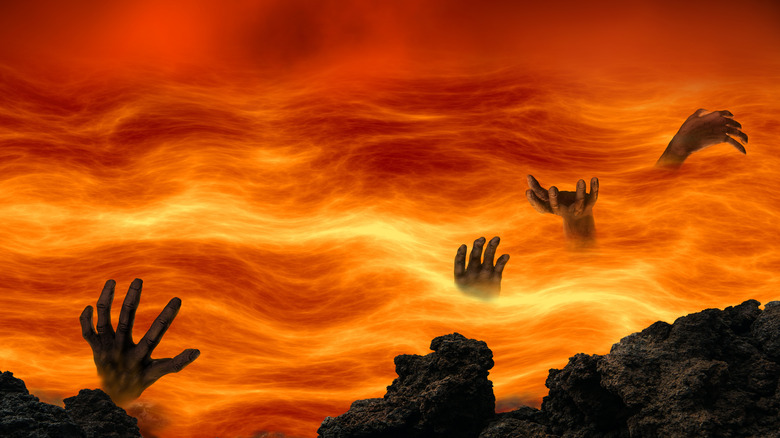What Dante's Inferno Changed About The Bible's Version Of Hell
Popular culture depictions of hell tend to share certain key elements: fire, brimstone, demons, lost souls being tormented for their wickedness in life. The Bible also provides some delightfully graphic descriptions of the horrors that await sinners there. Per Bible.org, Revelation 14:10 says "he will be tortured with fire and sulfur," and Matthew 13:50 speaks of "the fiery furnace, where there will be weeping and gnashing of teeth." Another classic text that has shaped humanity's image of what hell may look like is "The Divine Comedy," a three-part epic poem written by Dante over a period between around 1308-1321 (per Britannica).
The first part of the poem, "Inferno," sees Dante guided to the very depths of hell. Dante's "Inferno" certainly isn't short on the fiery torture and teeth-gnashing, but the poet's vision of hell sports some fundamental differences to the one presented in the Bible. Perhaps the most significant difference is that at the end of his journey to the center of hell, the character of Dante emerges in the second part of the poem: "Purgatorio," or purgatory. In the Bible, Compelling Truth states, there is no such concept — there is only heaven and hell, and no in-between. As Abraham puts it in Luke 16:9-31: "Those who would pass from here to you may not be able, and none may cross from there to us."
Fire and brimstone make way for a lake of ice
Another of the most crucial differences is that Dante introduced the notion of contrapasso. The Bible's hell is a place of endless torment, where all sinners are condemned in the same fashion. Meanwhile, contrapasso means that they are punished in a fashion that befits (or ironically flips) the crime, per Scholars & Rogues.
Dante's vision is divided into the iconic nine Circles of Hell, where sinners are punished for progressively worse transgressions in progressively worse ways. The Second Circle of Hell, for instance, is Lust, where strong winds blow at those who were lustful in life without end. Per History Lists, this befits the tempestuous life of those who could never calm their urges (Cleopatra is among the sinners Dante meets here). Elsewhere, the Ninth Circle of Hell, Treachery, takes the form of a frozen lake (in contrast to the rivers of fire many may envisage), with victims trapped in the ice at a depth that aligns with the extent of their treachery. Here languishes Lucifer himself, futilely beating his wings — just generating more frozen air — for eternity.

